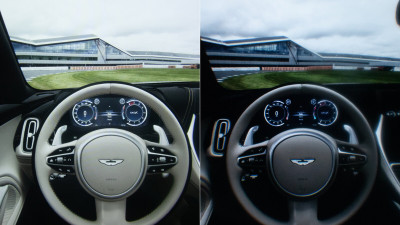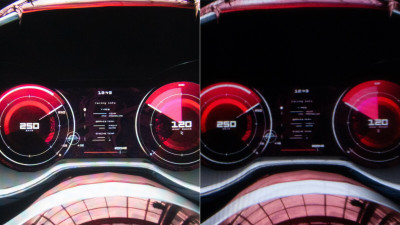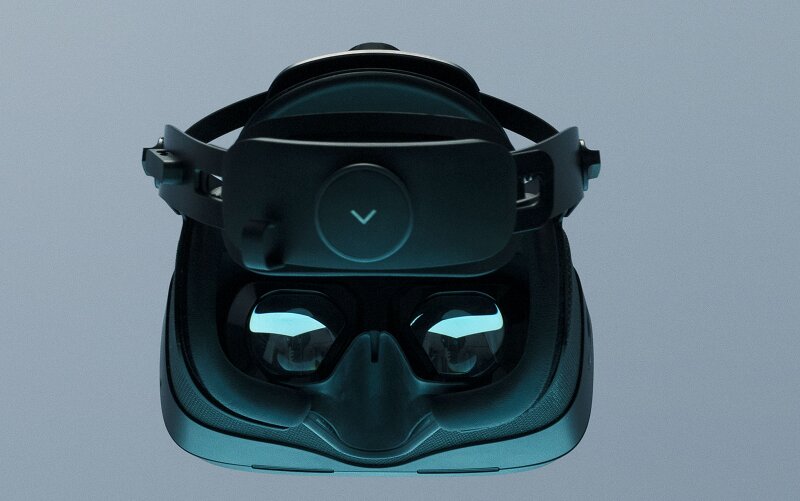If you want to get my attention as an editor and a writer, one good way is to highlight the human factors that have helped you to come to the design decisions that you have in your technology or product. So often, display technology providers seem to think displays exist without the viewer, but it’s a truism that ‘a display without a person has no function’©.

Varjo, the Finnish maker of high end VR systems got my attention very early on in its development, with its use of optics and processing to provide very high resolution to the centre of the eye (the fovea) and reducing the resolution elsewhere, where it’s not needed. It then impressed me at the AWE Expo several years with the quality of its mapping of virtual images onto its headset, showing that it had a sense of the importance of the whole system, not just the imaging part. The firm has also kept innovating and improving so it has stayed at the front in terms of the performance of VR systems that I have tried.
Although the firm has significantly reduced the pricing of its high end headsets from its first to latest generations, the cost of all this technology has limited the markets and applications that it can address. So, to broaden its market, it has developed a new and additional headset, the Aero, that simplifies the approach away from using dual resolution imagers. But it hasn’t abandoned its quest for the best possible result, given the constraints. I was able to meet virtually with Urho Konttori (the company founder & CTO) and Jussi Mäkinen (Chief Brand Officer) to hear about the new headset.
High Resolution Imagers
First, the imagers are miniLED backlit 3.2″ (that’s big) LCDs that have 2880 x 2720 resolution – way higher than other headsets. That resolution, over the 115° (that’s wide) field of view is around 35 pixels per degree. That is very good, but still less than half the 73 ppd that the high end foveal area of the XR-3 and VR-3 high end Varjo devices reach.
It’s easy to get carried away with megapixels. My best camera is a Sony Alpha 7S, which has only 12 megapixels, but what glorious pixels they are! When I use a good lens, I get great results. Nobody has ever said of any of my pictures that “they are just not high resolution enough”. So having enough pixels is only half the story.
If you don’t get the pixels to the eye, there’s no point. So, Varjo has not gone with a regular fresnel lens but has used a ‘variable resolution’ lens that has higher resolution in the middle. It took me a while to get my head around this, but what I understand the firm is doing is creating images on the display that assume the pixels in the middle of the display are smaller than those at the edges. It then compresses the centre part of the image optically so that the effect is of ‘square pixels’ i.e. the same density over the whole screen, even though it varies. It helped me in understanding this to think about the way that cinematographers use anamorphic lenses to squeeze an image horizontally to fit wide aspect ratio content onto standard aspect film.
Now, the processing for this is quite complex and so the Aero needs quite a big GPU to handle all the processing and it seems that the best way to generate the highest quality is to use virtual rendering of images up to 8K x 8K which are then down-sampled to the 3K x 3K for the imagers. Only Nvidia GPUs are currently supported and at the moment there are no plans to add AMD support. Connections to the driving PC are by DisplayPort and USB.
The LCDs can reach a peak brightness of 400 cd/m² although their calibrated brightness is 150cd/m². Varjo told us that the colour coverage is 99% of sRGB and 95% of DCI-P3. They also said that the colour accuracy is a bit better than on the high end headsets because there are not the same challenges of combining the output of two different imagers.
Varjo also told us that it had a ‘unique’ system of a scanning backlight that is synchronised with the way that the LCD is updated which avoids ‘rolling shutter effects’ and improves the clarity of the LCD. At the time I said that I thought it had been done before and my trusty database identified that the Philips TV business had a technology it called ‘ClearLCD’ that was based on HCFL (Hot cathode fluorescent tubes, not CCFLs) from Philips Lighting. They seemed to improve motion performance on LCDs when we had a demo back in 2005! However, I don’t think it was ever adopted in volume outside the firm and Philips abandoned HCFL in 2007 as LED started to appear on the horizon. Omdia’s Paul Gray mentioned to me that some TV set makers may still be doing this to try to avoid the need for 120Hz panels. So, nothing new here, although the inclusion of the technology is a good idea. Overall, the Aero displays are refreshed at 90Hz.
The firm is very proud of its proprietary eye tracking technology and it is integrated in the headset at 200Hz. I asked if there was any support for the facial recognition features that HP impressed me with a while back, but there is nothing specific and no developed API for that. However, pupil size can be tracked via the gaze system and that is a key part of the kind of emotion and cognitive load tracking that HP does, so it has the data for this. Saccade data is also available and so is saccade blanking data. Using that data allows ‘redirected movement’ – that is to say changing the scene subtly while the eye is ‘blanked’ to allow apparently unlimited virtual spaces to be seamlessly shown. The new headset also has a facility to allow those on the outside of the set to see where the users’ focus is – a handy features for trainers and designers.
Physically, the headset uses the same form factor as the higher end headsets and should be reasonably comfortable as the weight has been reduced by 300 grams.
So who is this headset aimed at? Well one of the key markets is in simulation. It can be used for pilot training and while, traditionally, most training was limited to learning a standard approach to flying a particular type of aircraft, increasingly the military is using very specific training so that particular missions can be rehearsed and practised in a range of scenarios. It’s much cheaper to do this with a headset than with a full-on simulator. Further, it can be done anywhere. (I mentioned to Varjo that at the I/ITSEC events, back when they used to happen, there was VR everywhere).
The headset is not targeted at gamers, but there are a lot of flight simulation enthusiasts around that have systems of enough power to drive the headset (still less than is needed to drive the higher headsets from the firm) and spend enough money on their hobby to indulge themselves at the price of $1990 or €1990.
The firm is taking orders on a first come, first served basis. I’m just hoping they get to the UK soon so that I can try one out! (BR)




